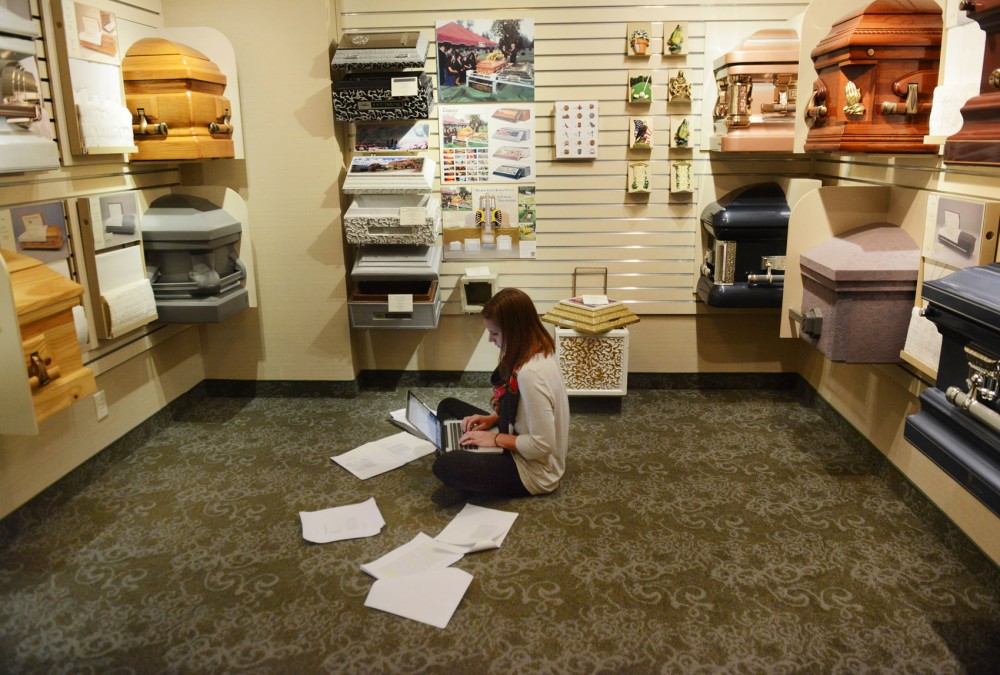Anne Christ’s grandmother’s shaky hands that accompanied her until death were relieved as she rested in her casket, giving Christ peace and an experience that shaped her future.
Christ, a University of Minnesota senior, said when her grandmother passed away, her interest in mortuary science — the study of deceased bodies — sparked. She said the mortician, who compassionately led her family through the funeral process, inspired her to pursue a career in the field.
“I want people to say they had a good funeral,” Christ said.
She is one of 60 total students in the University’s mortuary science program, in which the enrollment of women is dramatically increasing over time. About 45 years ago, only 5 percent of students enrolled in mortuary science were female. Currently, women make up just under three-quarters of the program.
Director Michael LuBrant said he thinks the department’s current female dominance is linked to the economy improving and to the overall increase of college women entering the medical field.
Minnesota is one of the nation’s few states that requires a bachelor’s degree to obtain a license to practice mortuary science. Most states only require a two-year degree.
Of the state’s morticians, about 86 percent hail from the University, said LuBrant, who is also a mortuary science assistant professor.
“We’re a unique profession,” he said.
LuBrant said many students in the program, like Christ, find comfort in seeing a deceased body made whole again.
The University program includes several classes to help students understand the grieving process and to teach them rituals for preparing the dead for burial or cremation. Students also take microbiology, chemistry, business, marketing and law classes.
In Minnesota, morticians also serve as funeral directors. And to become a licensed one, students must first pass a national board exam and partake in a 10-month internship.
When licensed, a mortician’s annual salary falls between $40,000 and $60,000, LuBrant said. Owning a funeral home can raise that pay up to $80,000 a year, and he said salaries in rural areas tend to reach even higher level since a smaller percentage of morticians live in small communities.
To get real-life practice, undergraduate students in the program practice speaking with families who have lost loved ones at funeral homes or cremation centers during their clinical phase.
Also during that time, the students build their embalming skills, learning how to preserve bodies once they have perished.
“Embalming has been practiced for thousands of years,” LuBrant said.
Senior teaching specialist Jody LaCourt said she trains several students each semester in the embalming process.
First, she said, students learn to find the femoral artery, and then they use instruments to disperse embalming fluid, like formaldehyde, into blood vessels. Body cavities are restored, if damaged by disease or in fatal accidents, and students also learn to wash and sanitize the bodies.
“We kind of think of it as surgery for the deceased,” LaCourt said.
Some mortuary science students say they use the program as a stepping stone to medical school or another medical profession that requires additional years of training,
LaCourt said the students start the lab with no prior training, so they usually begin the term riddled with nerves. But around the seventh week, she said, they become more confident.
“This is the best way to learn,” she said.










